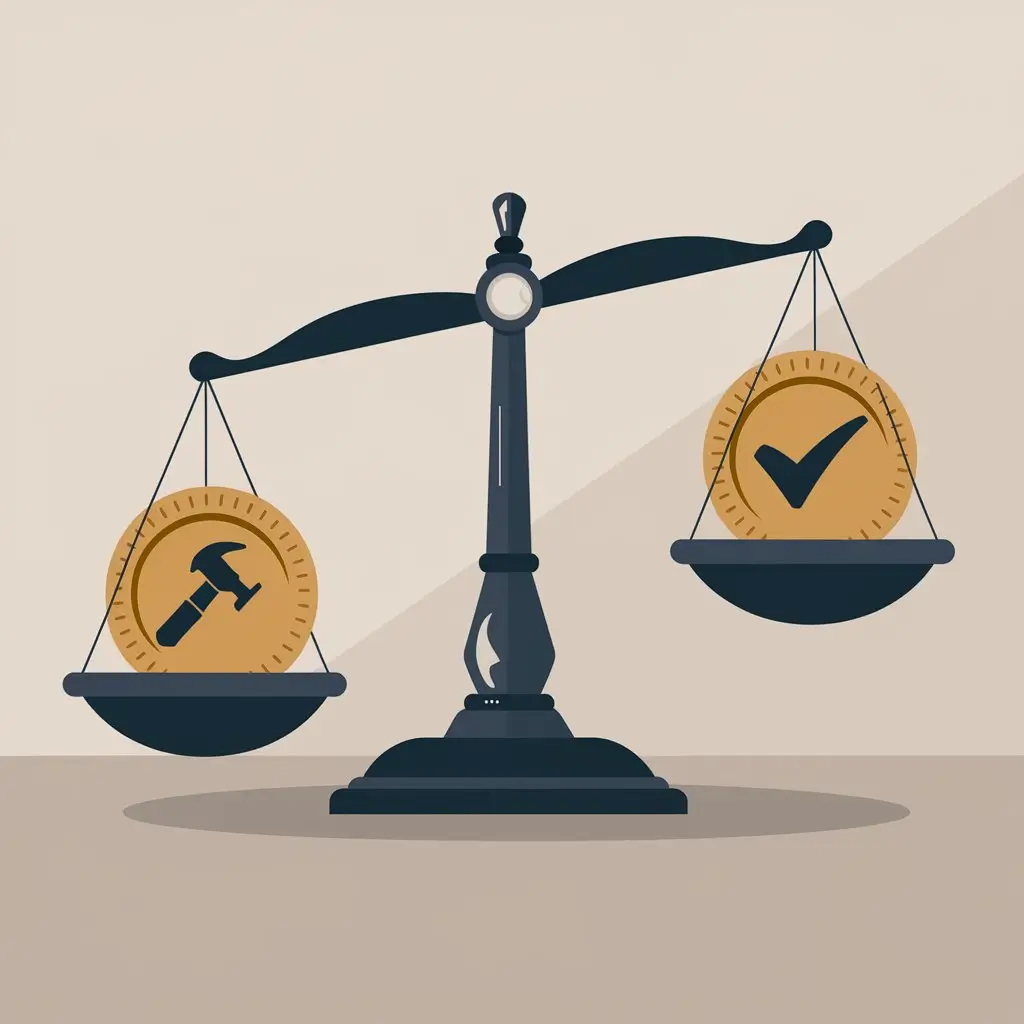Our everyday existence depends on decision-making capabilities because we must determine Breakfast meals as well as advance our careers and maintain interpersonal bonds. Personal and professional development needs effective decision-making abilities as a fundamental element. Numerous people experience problems making decisions which results in both professional stagnation and failed opportunities. This paper investigates the basis of decision-making challenges while assessing their influence on personal advancement.
Understanding Decision-Making
Decision-making is a nuanced psychological process that involves evaluating options and selecting a course of action. Understanding this process is crucial, as it allows individuals to identify the factors influencing their decisions and to develop strategies for improvement. This section delves deeper into the intricacies of decision-making, focusing on the psychological processes involved and the different types of decisions we face.
The Psychological Process of Decision-Making
At its core, decision-making is a cognitive process that requires individuals to assess information, weigh options, and consider potential outcomes. This process can be influenced by a variety of psychological factors:
- Cognitive Biases:
- Cognitive biases are inherent thinking patterns that can distort our judgment. For example, the anchoring bias causes individuals to rely too heavily on the first piece of information they encounter, while the confirmation bias leads them to seek out information that confirms their pre-existing beliefs. Understanding these biases can help individuals recognize when their decision-making is being compromised.
- Emotional Influences:
- Emotions play a significant role in decision-making. Positive emotions can enhance creativity and open-mindedness, while negative emotions, such as fear, stress, or sadness, can cloud judgment and lead to rash decisions. Emotional intelligence, or the ability to understand and manage one’s emotions, can improve decision-making by allowing individuals to recognize when their feelings may be influencing their choices.
- The Role of Intuition:
- Intuition, or gut feeling, is another important aspect of decision-making. Often, individuals rely on their instincts when faced with uncertainty or limited information. While intuition can be a valuable tool, it is essential to balance it with analytical thinking to ensure well-rounded decision-making.
Types of Decisions
Understanding the types of decisions we encounter can provide insight into how we approach the decision-making process:
- Routine vs. Complex Decisions:
- Routine decisions are those that we make frequently and often with little thought, such as choosing what to wear or what to have for lunch. These decisions typically rely on established habits and do not require extensive analysis. In contrast, complex decisions, such as selecting a career path or making a significant financial investment, demand careful consideration, research, and often involve multiple stakeholders. The complexity of these decisions can lead to increased stress and uncertainty.
- Individual vs. Group Decisions:
- Decisions can also be categorized based on whether they are made individually or collaboratively. Individual decisions allow for personal autonomy and quick resolution but may lack diverse perspectives. Group decisions, while drawing on the collective knowledge of the team, can lead to conflicts, groupthink, and prolonged deliberation. Understanding these dynamics is essential for effective group decision-making, as it can help mitigate challenges and leverage the strengths of diverse viewpoints.
- Strategic vs. Tactical Decisions:
- Within organizational contexts, decisions can be strategic (long-term, overarching choices that shape the direction of a company) or tactical (short-term, specific choices that implement the strategic vision). Strategic decisions often require a broader understanding of market trends and organizational goals, while tactical decisions focus on the details necessary for execution. Recognizing the distinction between these types of decisions can help leaders allocate resources and prioritize effectively.
The Decision-Making Environment
The environment in which decisions are made also plays a critical role in the process. Factors such as time constraints, available resources, and external pressures can significantly impact decision quality:
- Time Constraints:
- The pressure of time can lead to rushed decisions, often resulting in less optimal outcomes. Understanding the importance of pacing in decision-making can encourage individuals to take the necessary time to evaluate options thoroughly, even in high-pressure situations.
- Resource Availability:
- The resources at one’s disposal, such as information, finances, and support, can influence the decision-making process. Resource limitations force people to make deliberate decisions while abundant resources bring forth many options at the cost of decision-making difficulty.
- External Pressures:
- External elements consisting of societal forces as well as cultural standards alongside organizational guidelines generate forces which influence decision-making processes. Awareness of these influences can help individuals navigate their choices in a way that aligns with their values and goals.
The Role of Experience and Learning
Experience plays a crucial role in shaping our decision-making abilities. As individuals encounter various situations, they learn from their successes and failures, which can refine their judgment over time. The analysis of previous choices together with their results helps generate essential knowledge for future determination making. Additionally, formal education and training can enhance decision-making skills by providing frameworks and tools for analysis.

Common Reasons for Decision-Making Struggles
Fear of Failure
Fear of failure is one of the most significant barriers to effective decision-making. This fear can manifest in several ways:
- Analysis Paralysis:
- Individuals may become so preoccupied with evaluating potential outcomes and considering every possible consequence that they become unable to make a decision at all. Such passive behavior produces unexploited possibilities and intensifies the users’ dissatisfaction.
- Overthinking Potential Outcomes:
- The tendency to overthink can cause individuals to focus excessively on negative scenarios. This can create a cycle of worry that inhibits clear thinking and rational decision-making. When people think about the worst possible situations they tend to believe undecided inaction is superior to any incorrect choice they might make.
Information Overload
The current information-rich environment generates extensive amounts of data that decision-makers must deal with which creates difficulties during their decision-making processes.
- Difficulty Processing Too Much Data:
- When confronted with extensive information, individuals may struggle to identify which data is relevant to their decision. This can lead to confusion and indecision, as they may not know how to prioritize or interpret the information effectively.
- The Paradox of Choice:
- According to the paradox of choice individuals may become dissatisfied when they have multiple options. When faced with numerous alternatives, individuals may experience anxiety about making the “right” choice, which can ultimately lead to choice avoidance.
Lack of Confidence
A lack of confidence can severely impact decision-making capabilities:
- Self-Doubt and Its Effects:
- Individuals who doubt their abilities may struggle to trust their judgment. This self-doubt can lead to second-guessing and hesitation, causing individuals to seek excessive validation from others before making a decision.
- Imposter Syndrome:
- Imposter syndrome, the feeling of being unqualified or undeserving of success, can create significant barriers to decision-making. Individuals may fear that their decisions will expose them as frauds, leading to a reluctance to take risks or assert their opinions.
Social Influences
Social dynamics can profoundly impact our decision-making processes:
- Peer Pressure and Conformity:
- The desire to fit in or gain approval from peers can lead individuals to make choices that do not align with their values or desires. This pressure can result in decisions that are more about social acceptance than personal conviction.
- Influence of Authority Figures:
- Authority figures, such as bosses or mentors, can exert significant influence over decision-making. The benefits from guidance may outweigh blind dependency on authority figures which hinders personal independence along with self-assurance.
Emotional Factors
Decisions significantly rely on emotions but different emotional conditions create obstacles to the decision-making process.
- Stress and Anxiety:
- High levels of stress or anxiety can cloud judgment and lead to impulsive decisions or avoidance. When emotions run high, individuals may revert to their instincts rather than engage in thoughtful analysis.
- Overwhelming Positive Emotions:
- Interestingly, even positive emotions can complicate decision-making. For example, excitement about a new opportunity might lead to hasty decisions without adequate consideration of potential downsides.
Cognitive Overload
Cognitive overload occurs when individuals are faced with too much information or too many options to process effectively:
- Mental Fatigue:
- Making decisions requires mental energy and focus. When individuals are mentally fatigued, their ability to evaluate options diminishes, leading to poorer decision-making.
- Competing Priorities:
- Juggling multiple responsibilities can lead to cognitive overload, making it challenging to dedicate the necessary time and attention to any single decision. This can result in shortcuts, snap judgments, or avoidance altogether.
Lack of Clarity and Direction
Without clear goals or values, decision-making can become particularly challenging:
- Ambiguous Values:
- Individuals who are unsure of their values or priorities may struggle to make decisions that align with their true desires. This ambiguity can lead to indecision and dissatisfaction with the choices made.
- Unclear Objectives:
- When goals are not well-defined, it becomes difficult to evaluate options effectively. Without clear criteria for decision-making, individuals may feel lost, leading to frustration and procrastination.
Cultural and Environmental Factors
Cultural background and environmental context can also influence decision-making:
- Cultural Expectations:
- Different cultures have varying norms regarding decision-making. In some cultures, collectivist approaches may prioritize group consensus, which can complicate individual decision-making. In contrast, individualistic cultures may emphasize personal choice, leading to different types of pressures.
- Environmental Stressors:
- External stressors, such as economic instability or personal crises, can create an environment that hampers effective decision-making. When individuals are preoccupied with external challenges, their cognitive resources may be diverted away from making thoughtful choices.
The Impact of Poor Decision-Making on Growth
Poor decision-making can have profound and far-reaching consequences that hinder both personal and professional growth. When individuals fail to make effective choices, the repercussions can affect various aspects of their lives, leading to stagnation, missed opportunities, and even negative psychological outcomes. This section explores the multifaceted impacts of poor decision-making on growth.
Personal Growth
- Stagnation in Career and Personal Life:
- Poor decision-making can lead to a lack of progress in one’s career and personal development. For instance, individuals may hesitate to pursue new job opportunities or personal challenges due to indecision or fear of failure. This stagnation can result in feelings of frustration and dissatisfaction, as individuals may find themselves stuck in unfulfilling roles or routines.
- Missed Opportunities:
- Each decision carries the potential for growth and development. When individuals struggle to make choices, they may miss out on valuable opportunities for learning, networking, and personal enrichment. For example, declining invitations to collaborate on projects or participate in training programs due to indecision can prevent individuals from expanding their skills and experiences.
- Impact on Self-Identity:
- Regularly making poor decisions can erode an individual’s sense of self. When decisions lead to unfavorable outcomes, individuals may begin to question their abilities and judgment. This self-doubt can hinder personal growth, as individuals may become less likely to take risks or pursue their passions.

Professional Growth
- Consequences for Team Dynamics and Leadership:
- In a work environment, poor decision-making can disrupt team dynamics. When leaders are indecisive or make uninformed choices, it can lead to confusion and frustration among team members. This lack of direction can diminish morale and productivity, ultimately affecting the overall performance of the organization.
- Impact on Organizational Success:
- Organizations thrive on effective decision-making at all levels. Poor decisions regarding strategy, resource allocation, or project management can lead to financial losses, reputational damage, and reduced competitiveness in the market. In the long run, organizations that struggle with decision-making may find it difficult to innovate and adapt to changing environments, stunting their growth.
- Career Advancement:
- Individuals who consistently struggle with decision-making may find it challenging to advance in their careers. Employers often seek individuals who can make informed, timely decisions and take initiative. A track record of indecision can limit opportunities for promotions and leadership roles, as employers may perceive these individuals as lacking the necessary skills for higher responsibility.
Psychological Effects
- Increased Stress and Anxiety:
- The pressure associated with decision-making can lead to heightened stress and anxiety levels. When individuals are unsure of their choices, they may experience ongoing worry about potential consequences. This stress can have negative effects on mental health, leading to burnout and decreased overall well-being.
- Lowered Self-Esteem and Motivation:
- Poor decision-making often results in negative outcomes, which can diminish an individual’s self-esteem. When people feel inadequate due to their choices, it can create a cycle of avoidance and apathy. This lack of motivation can further hinder personal and professional growth, as individuals may become disengaged from opportunities for development.
- Cognitive Dissonance:
- Poor decisions can lead to cognitive dissonance, the psychological discomfort experienced when one’s beliefs and actions are misaligned. For example, individuals who make choices that contradict their values may struggle with feelings of guilt or regret. This dissonance can create internal conflict, affecting overall happiness and satisfaction.
Long-Term Consequences
- Reinforcement of Negative Patterns:
- Consistently making poor decisions can reinforce negative behavioral patterns. Individuals may develop a habit of indecision or avoidance, making it increasingly challenging to break the cycle. Over time, these patterns can become ingrained, leading to a pervasive sense of helplessness.
- Impact on Relationships:
- Poor decision-making can strain personal and professional relationships. For example, indecisiveness can frustrate friends, family, or colleagues who depend on timely and effective choices. Over time, this frustration can lead to interpersonal conflicts, damaging trust and collaboration.
- Difficulty in Learning from Mistakes:
- If individuals do not reflect on their poor decisions and learn from them, they may be doomed to repeat the same mistakes. This inability to grow from experiences can severely limit personal and professional development, as each missed learning opportunity represents a setback.
Strategies for Mitigating the Impact
- Developing Decision-Making Skills:
- Investing in developing decision-making skills can help individuals mitigate the negative impacts of poor choices. This can include training in critical thinking, problem-solving, and emotional intelligence, which can enhance confidence and effectiveness in making decisions.
- Seeking Feedback and Support:
- Engaging with mentors, peers, or professionals can provide valuable insights and perspectives that aid in decision-making. Constructive feedback can help individuals refine their thought processes and improve their decision-making capabilities over time.
- Embracing a Growth Mindset:
- Adopting a growth mindset, believing that abilities can be developed through effort and learning, can counteract the negative effects of poor decision-making. Individuals who embrace this mindset are more likely to view failures as opportunities for growth, fostering resilience and adaptability.
Strategies to Improve Decision-Making
Recognizing and Addressing Cognitive Biases
Knowledge about cognitive biases acts as the initial element towards enhancing decision quality. By recognizing these biases, individuals can take steps to mitigate their effects, allowing for more rational and balanced choices.
Simplifying the Decision-Making Process
Simplifying the decision-making process can alleviate anxiety. Setting clear objectives and limiting options can help focus attention on what truly matters, making it easier to evaluate choices.
Building Confidence
Building confidence in decision-making is crucial. Reflecting on past successes can help reinforce a positive self-image. Seeking feedback from trusted peers can also provide reassurance and support.
Embracing Failure as a Learning Opportunity
Reframing failure is essential for growth. Viewing setbacks as opportunities for learning rather than as definitive failures can encourage individuals to take risks and make decisions without fear of negative outcomes.
Conclusion
Effective decision-making is integral to both personal and professional growth. By understanding the psychological processes behind our struggles, recognizing common barriers, and implementing strategies for improvement, individuals can enhance their decision-making skills. Ultimately, embracing the decision-making journey can lead to greater opportunities for development and success.

